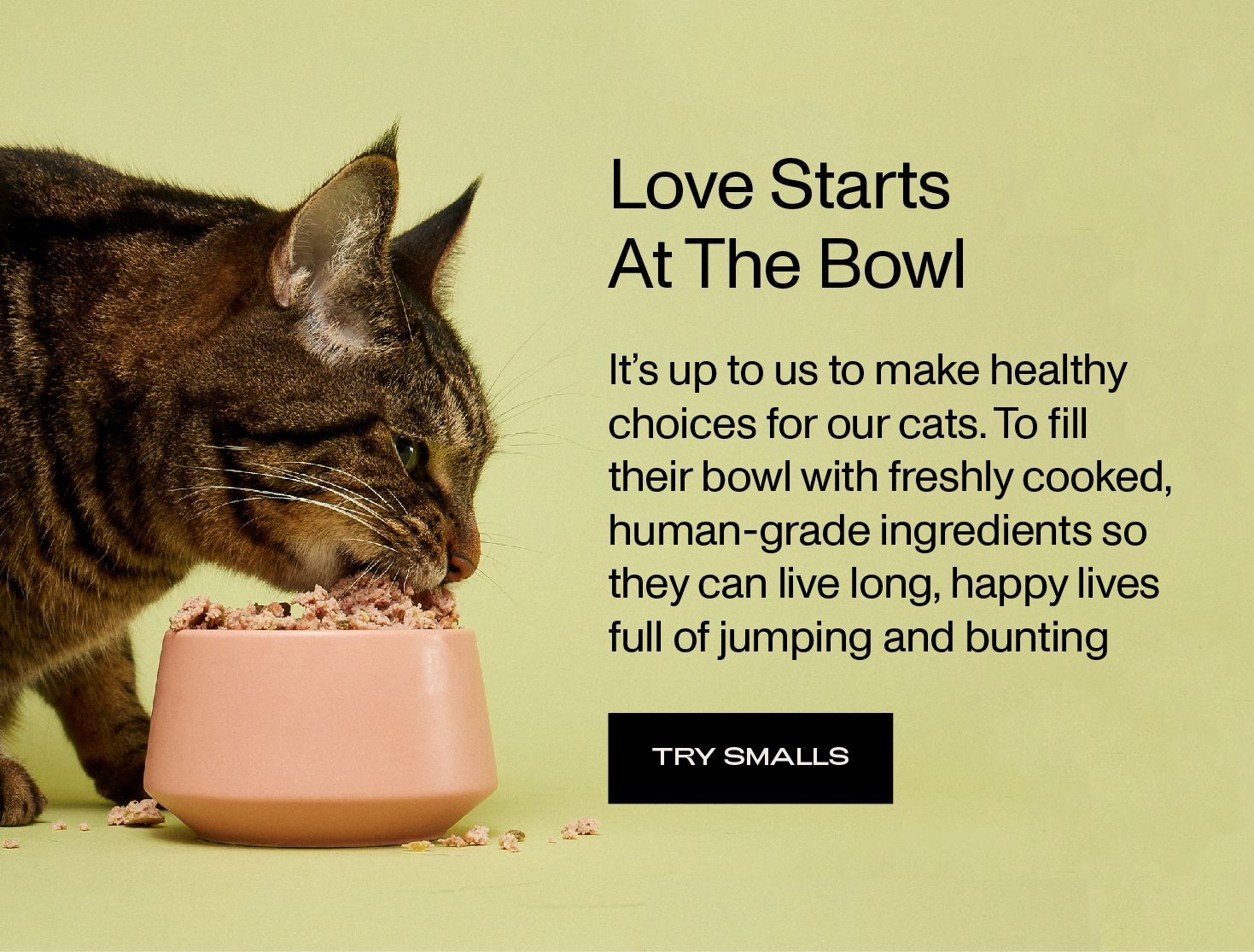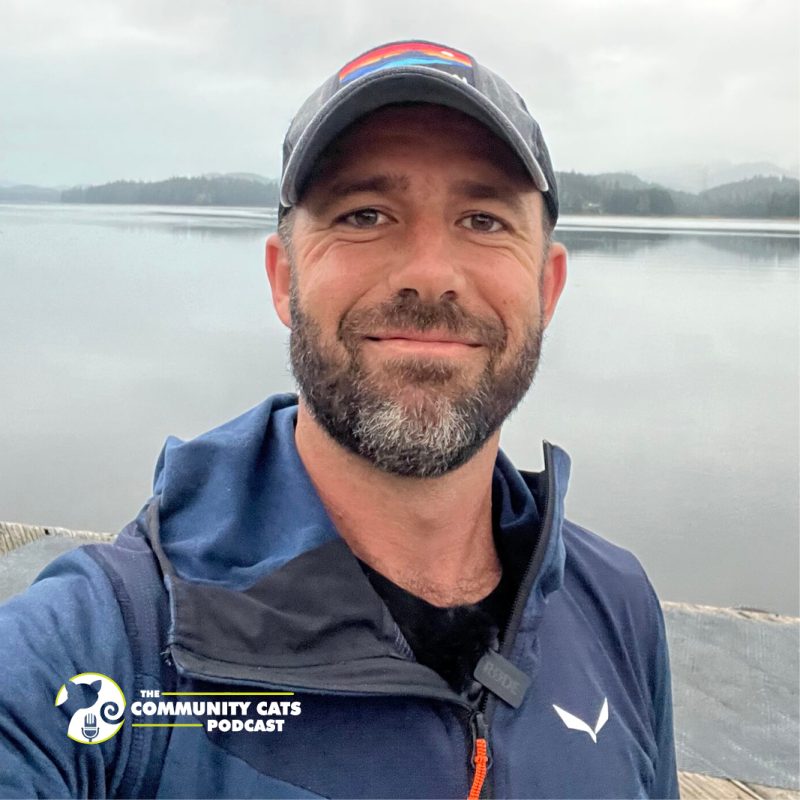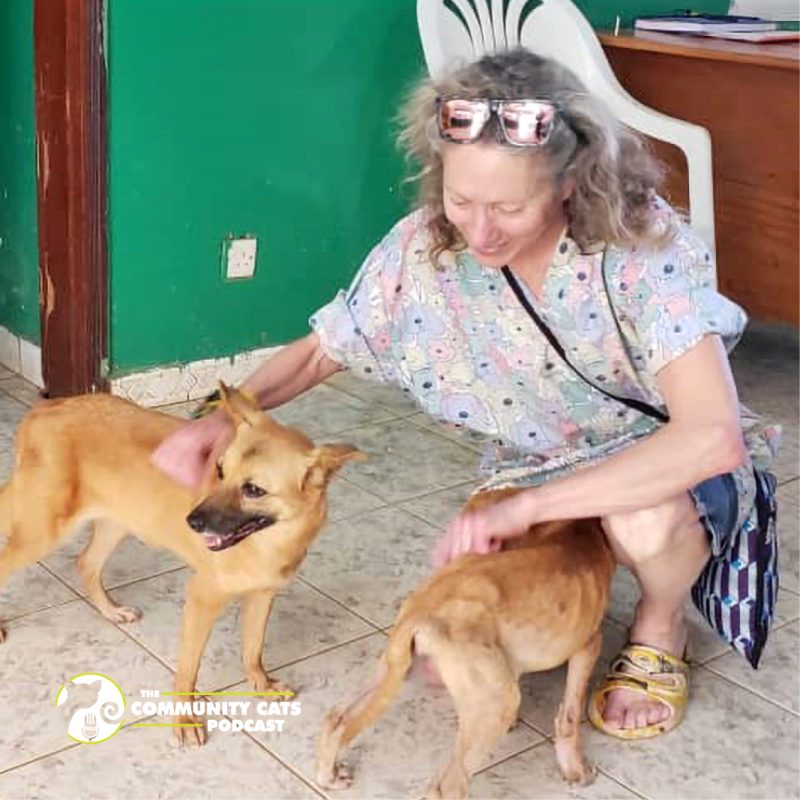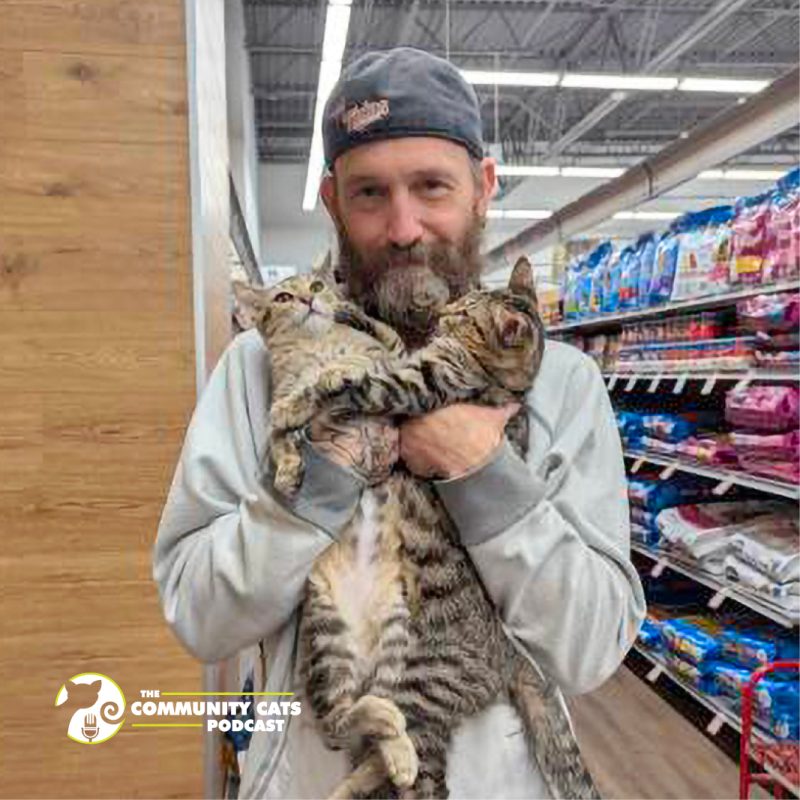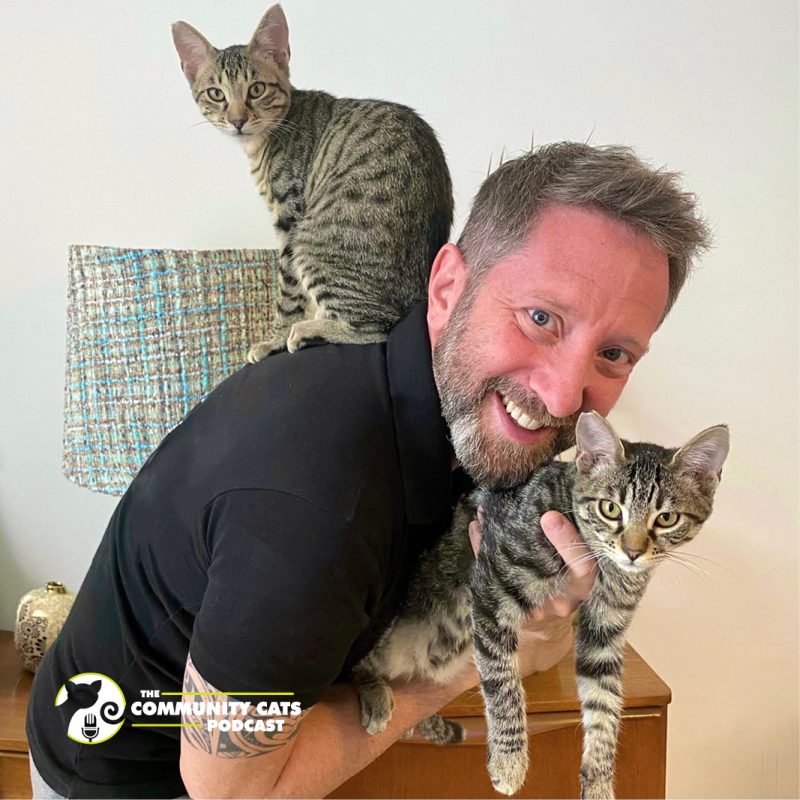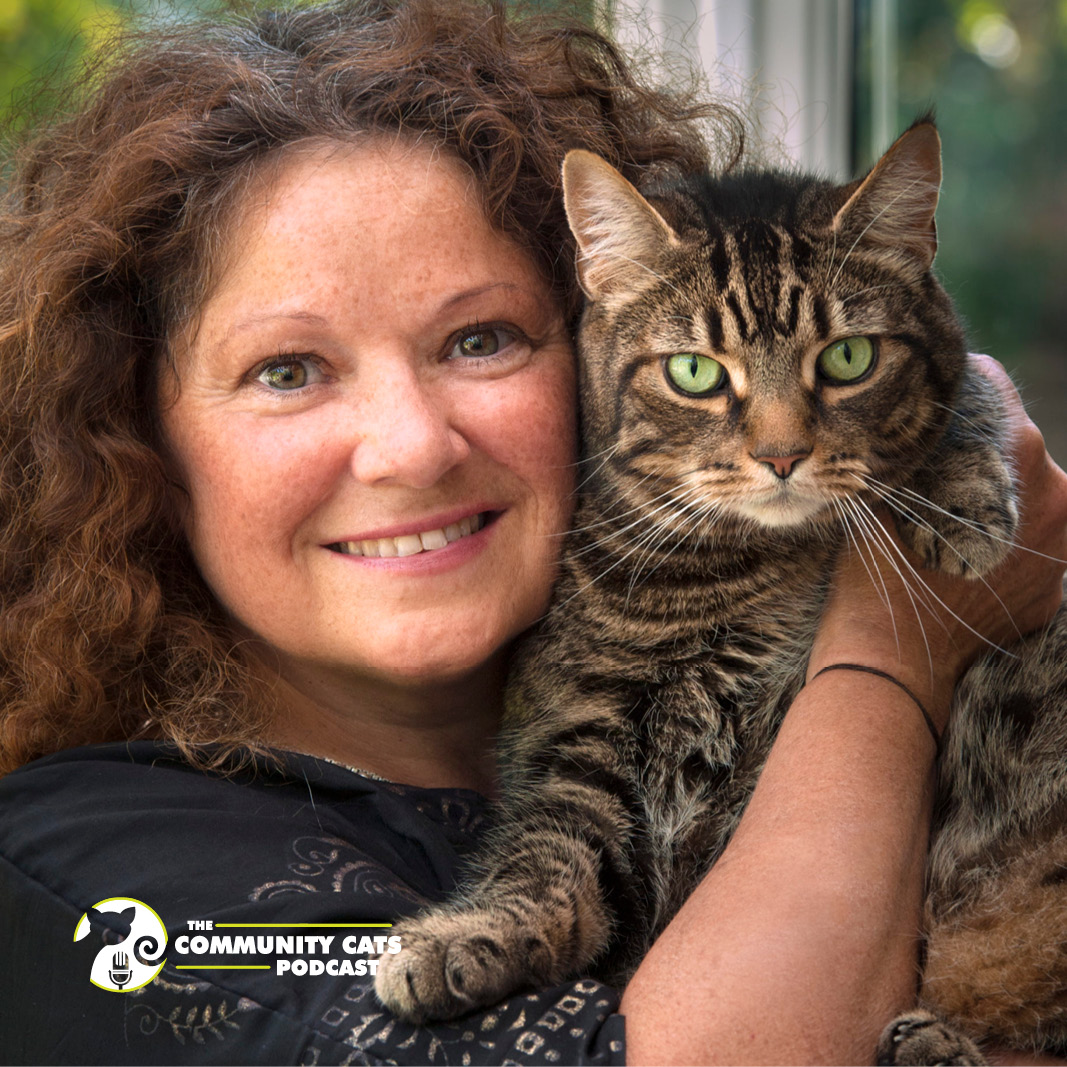
Anita Kelsey, Cat Behaviorist
May 25, 2021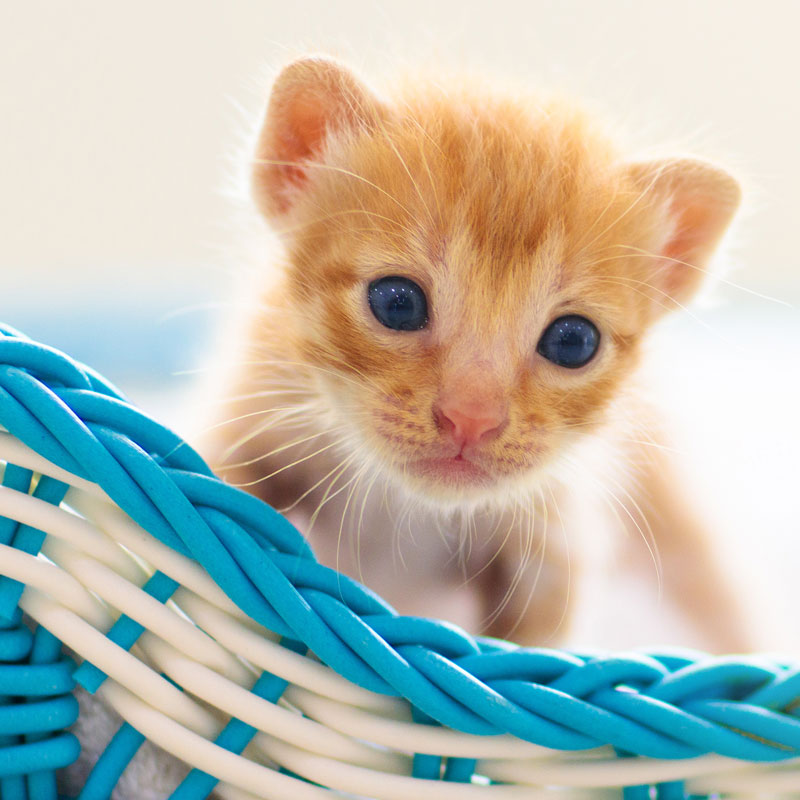
The Whole Kit and Caboodle: TNR of Kittens
June 2, 2021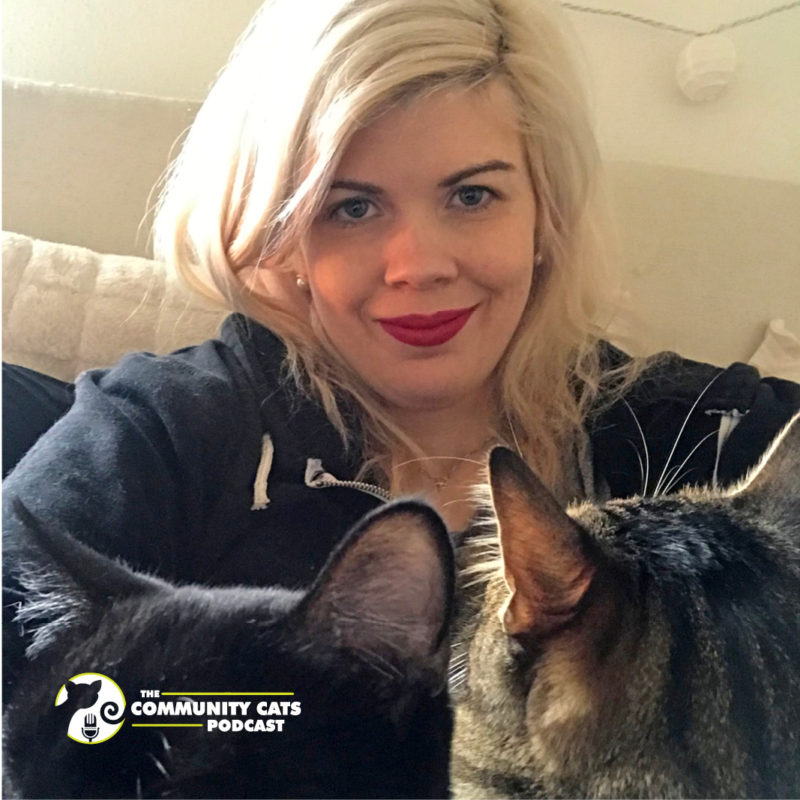
“That’s sort of the vibe I’m going for: mid-century with a touch of cats.”
Listen to Episode #406 Now
This episode is sponsored in part by Smalls Fresh Cat Food and Doobert.com.
Daralyn Kelleher is an LA-based YouTuber who turned to furniture making during quarantine, documenting the process on her YouTube Channel. Stacy and Daralyn chat about Daralyn’s cat-themed, mid-century modern furniture, the possibility of venturing into making tiny furniture for cats, and making shelters for feral cats.
Daralyn is also a trapper and cat colony caretaker. She shares about the difficulties of getting used to trapping, especially when the cats react poorly to being trapped.
You can find Daralyn on her YouTube Channel or on her Instagram or Twitter.
Read Episode #406
Kristen Petrie [00:00:02]
You've tuned in to the community cats podcast ready. Let's go.
Stacy LeBaron [00:00:13]
Welcome to the Community Cats Podcast. I am your host, Stacy LeBaron. I've been involved helping homeless cats for over twenty years with the Merrimack River Feline Rescue Society. The goal of this podcast is to expose you to amazing people who are improving the lives of cats. I hope these interviews will help you learn how you can turn your passion for cats into action. Today we're speaking with Daralyn Kelleher. Daralyn is a Los Angeles-based YouTuber, an amateur woodworker, who at first tried out furniture making as a result of too much spare time in quarantine. She soon fell in love with the feeling of independence the hobby instilled in her and she showcased her attempts, not always successful but often humorous, on her DIY YouTube series “All By Myself”. She has just begun her journey to make cat themed mid-century modern furniture as she is, in fact, a self-described cat lover through and through. When not making videos on the internet, she can be found trying to tame feral felines on the street. Daralyn, I'd like to welcome you to the show.
Daralyn Kelleher [00:01:13]
I thank you so much for having me.
Stacy [00:01:17]
So, before we jump into the work that you've been doing, first and foremost, you know, why are you passionate about cats?
Daralyn [00:01:25]
Well, I grew up around animals. My mom actually ran a business when I was a little girl. It was like an animal boarding facility. And so basically, in the same building where I grew up in my house, we had fifteen to twenty cats at all times that were boarding and then we had three of our own cats. Cats have always just been, I guess, a way of life. And so, not only do I sort of have that background but now I have four of my own cats and I spend a lot of time trying to feed the ferals and just, I guess, spreading the love.
Stacy [00:02:00]
Excellent, sounds good. So, how did you discover TNR and feral cat colony management and all that?
Daralyn [00:02:07]
Sure. So, basically, I moved into my current building where I live in an apartment building in Los Angeles. And I noticed there were some cats living in the garage and, I guess, like living in the garage but it's open to the outdoors, so coming and going. And I was curious about them at first, every now and then I give them some food but I didn't really have a huge involvement until about, I want to say eight months ago. They kind of had an explosion of kittens. There were just so many. I think there may be three litters all born at once. And unfortunately, one of the kittens, one day I was driving to work and I saw that one had been hit by a car and it was just heartbreaking because I had just fed that kitten the night before. And so from that point forward, I called Luxe Paws which is my neighborhood TNR organization and I've been working with them to trap the cats and try to get the ones that we can homes and just manage the other ones.
Stacy [00:03:09]
So being a relatively new trapper, meaning within the last year or so you know, how has your experience been in learning how to do TNR? Are there things we can do to help mainstream it more? Does it seem hard to do? Was it easy to learn? Did you have enough support?
Daralyn [00:03:25]
I definitely had support because they had two trappers from my community that came and worked with me. And so they kind of taught me, I guess, the ins and outs of it which was helpful for sure. And so they started with me but then they would only come certain nights. So then the other nights of the week, I knew there were still cats that needed to get trapped so I would just work independently. So I guess it was a good training experience if you will, but how has it been? I mean, the first time I caught one I was like so nervous because of how the cat reacts when the trap goes down and I felt so bad. It's hard to be a cat lover and do, I guess, like the necessary evils of trapping them because like, obviously the cat is confused and you can't communicate to them. And that's, it's a challenge, but I think that for me that's just an adjustment and then once you get over that it just becomes a lot easier.
Stacy [00:04:23]
I want to thank you very much for sharing that because I was actually hoping you were going to go that way because so many first-time trappers have a really hard time with the cats’ response when they trap. And that's one of the reasons why we at the Community Cats Podcast and Neighborhood Cats have partnered up to do monthly trapper training certification programs and webinars one Saturday a month. Because we find a lot of people will see that first initial reaction to a cat going into the trap and they're like, oh, I can't do this anymore. Oh, this is just not for me. And it's really hard to understand that it is a necessary evil, so to speak, to getting them spayed and neutered. And then releasing them is really fun because they're like, oh, I'm home. It's great. I know it's happy time. But it's that initial trapping that for first timers can be really hard. Now, the veteran trappers get this like adrenaline rush and get really excited when they get the last cat in the colony trapped. And so there's sort of a reverse feeling when you get to the end of the colony and you're like, we finally have this done, you know, at least for now, but it's interesting. And I'm glad you shared that because that's a very common feeling with many people when they're first starting out with trapping. So thank you again for sharing that. I appreciate that. So tell me a little bit about your experience in quarantine getting involved with woodworking and your YouTube series, you know, share with me what you've been doing over this time.
Daralyn [00:05:58]
Well sure, absolutely. So when the quarantine first happened in Los Angeles and the pandemic first began, I was let go from my job at that time. And I live alone with my cats, at that time it was three cats, and I really wasn't seeing anyone. So actually, by the way, going down and feeding the ferals was actually a terrific social activity for me because I wasn't seeing anyone and it was a scary time. So that was kind of the beginning of how I was befriending those ferals, but not only that but I also started working on my YouTube channel, which I had been, I had been sort of making YouTube videos before but I wasn't able to commit to it as much as I've been able to do when I had this excess of time, with losing my job and trying to stay in my apartment twenty-four/seven. So, I basically started this series on my channel that was dedicated to productivity. I was trying to figure out my niche. I actually had three miniseries that I was doing three videos a week. So I had productivity, I had fitness and I had cats. And I was just trying to stick to those themes and figure out what made sense for me but I really enjoyed the most the productivity videos. Cleaning my apartment and just, I guess taking control of my space during a time when I felt like I didn't have any control. And so from there, I eventually got to a point where my apartment was as clean as it was gonna get but apparently, that will happen and I just was like, wow, I really need new furniture. I guess I'll make it. And so, that's how I went in that direction and it's been enlightening ever since.
Stacy [00:07:40]
So being the fact that this is a podcast. Can you describe what your furniture looks like?
Daralyn [00:07:46]
Sure, absolutely. I love mid-century modern furniture. I love the style. I'm doing my best to be able to adhere to that as a person that has never made furniture before, but I did make this one nightstand that I feel so proud of and one thing that was mentioned in my bio was that I'm trying to sort of cat theme the pieces. I haven't been able to do that with every single piece but specifically with this one nightstand that I'm so proud of, I was able to source these cat-shaped golden poles. So I have sort of this running stretching cat as a handle on the drawer and the front of the nightstand and that's kind of the vibe I'm going for. So it's mid-century with a touch of cats.
Stacy [00:08:31]
Very good. Excellent. And we were talking a little bit early on, actually before we hit the recording button, that you're even thinking about possibly venturing into some cat furniture, you know. For cats thinking as a designer, you know, what is missing in cat furniture right now?
Daralyn [00:08:49]
Yeah. Absolutely. I, well, one thing, I guess I'm sort of taking baby steps with it. One thing I'm currently working on is, I'm making an ottoman that I'm converting into a little cat house, like a little cat cube. So that I'm really excited for. I mean, I'm not reinventing the wheel or anything. I'm not reinventing the cat cube but I'm just excited to see how my cats react to it. And then from there, I mean, in terms of vision and goals long-term, once I get the hang of making little mini furniture pieces for cats. I mean, I once saw this, this is online, I saw this entire room full of miniature, tiny mid-century pieces that were all made for cats. Like a miniature mid-century couch. And like it just looked like it was for humans but it was cats sitting all around the room and it was just so cute and I'd love to be able to do something like that.
Stacy [00:09:44]
Excellent. Have you thought at all about shelters for your feral cats?
Daralyn [00:09:49]
I have actually and I did make a couple shelters since, I want to say in the last two months, I made two. I made to one out of a cooler and one out of large Tupperware container. I wasn't able to make a video of the process because I felt so out of my wheelhouse and I just wanted to try it, but that's, I guess, the next step is trying to do that but add a little bit more style to it.
– Start mid-roll advertising-
Stacy [00:10:16]
Give your feline friend protein-packed meals they'll crave with Smalls. Smalls is fresh human-grade food for cats, delivered right to your doorstep so you too can embrace your inner house cat. All cats are obligate carnivores. They need fresh protein packed meals. Conventional cat food is made with profits in mind, using low-quality, cheap meat byproducts, grains, and starches coated in artificial flavors. Smalls, on the other paw, is made with cats in mind. Smalls develops complete and balanced recipes for all life stages with leading cat nutritionists. Starting with human-grade ingredients like you or I would find at the market, Smalls recipes are gently cooked to lock in protein, vitamins, minerals and moisture. No room for fillers. No need for flavoring. Better quality ingredients mean a better healthier life for your cat. Since switching to Smalls, cats have experienced improved digestion and a less smelly litter box, softer and shinier coats plus better breath. Try Smalls today for your cats in your household. Hooch, loved it.
Kristen [00:11:16]
Use offer code COMMUNITYCATS at checkout, for a total of thirty percent off your first order at smalls.com.
Stacy [00:11:23]
Are you ready to be part of the solution for feral and stray cats in your neighborhood? If so, then make sure to sign up for our next Neighborhood Cats TNR Certification Workshop. A new workshop is held online each month, generally on the first Saturday of the month, but please check our website for exact dates. For just ten dollars, expert instructors will teach you best practices for trap neuter and return, TNR. Learn what TNR is and why it works. We’ll cover getting along with neighbors, preparations for trapping, trapping itself, including entire colonies at once, feeding, providing winter shelter and more. Take advantage of the interactive format, extensive handouts, and video footage of actual projects. Attendees will receive a certificate of attendance and gain access to an ongoing Facebook group, for networking with other TNR activists. The two-and-a half-hour workshop is led by Susan Richmond, the executive director of Neighborhood Cats, and Brian Kortis, Neighborhood Cats National Programs Director. To find out the date of the next workshop and sign up, just visit communitycatspodcast.com.
Stacy [00:12:27]
As we emerge from the global pandemic of Covid, fostering is emerging as the new normal in the animal welfare industry but shelter management software doesn't provide the tools or the workflows for communicating with fosters at scale. So many organizations struggle to maintain hundreds of animals in foster homes. If only there was a system that was custom built specifically to solve this problem. Introducing Fosterspace, powered by our friends at Doobert. Fosterspace was custom built to allow you to manage hundreds of foster relationships and to communicate with them via text, email, and even Facebook Messenger. Your fosters have a portal where they can upload videos and photos and updates on their animals and organizations can schedule fosters for meet-and-greets, adoption days, or anything else they need. There's so much more to check out. Sign up for free at www.doobert.com and go to the Fosterspace tab to get started.
-End mid-roll advertising-
Stacy [00:13:20]
You know, as a person out there, as you said, feeding the feral cats which was actually really helpful for your own mental wellness and being engaged during a quarantine, being somebody, you know, sort of living alone and feeling isolated even though you are in L.A. Being on your own sort of, with the trap neuter return. You do have some support from Luxe Paws but what does it feel like being somebody on your own and doing TNR? It amazes me. The reason I ask this question is because it amazes me that so many people in the various conferences that I run, like, it's over sixty percent of the folks that are attending these webinars, actually have no affiliation with a group whatsoever and they're doing this all on their own. And to me that amazes me because I feel like there's just so much labor involved in managing a colony and doing some of the things that you've been doing as an individual. But also, it seems that a lot of people are like that. It seems like you're sort of a hybrid. You're like somewhat on your own but you're also part of an organization and that organization is Luxe Paws and I don't know if you want to share any information about that group.
Daralyn [00:14:26]
Yes, Luxe Paws has been just a tremendous organization. Started in the Silver Lake area of Los Angeles and I believe they've been going for about a decade now. Their handle on Instagram is @luxepaws and they are just an incredible resource. And so they've really been available for me any time I've needed help but you're right, it is a hybrid situation because when I trapped my first cat completely on my own, I was panicked and freaking out like I was mentioning to you before. I guess I was mirroring the cat like, you're scared, I'm scared. So I called up one of the volunteers from Luxe Paws and she talked me through the entire process. She had to, of course, manage as well, helping me through it, but she was able to guide me. So they're just an incredible organization doing incredible things and basically, I wouldn't be able to do what I've done at all without them.
Stacy [00:15:23]
And you also have done a bit of foster care. Do you have any foster cats or have you had any recently?
Daralyn [00:15:30]
This summer I had three of my own cats and I had three fosters and two of the fosters had actually come, they were kittens who had come from my garage. And well, actually, all three of them were kittens that had come from my garage. Two of them, I was able to find a home and get them adopted. One of them, I had to adopt myself. It was a foster fail. Her name is Cindy. She's a little black kitten, she sleeps in my arms every night like, I love her. And the other two, it's so hard. I, fostering is so challenging because I miss the other two. Their names were Piper and Annabelle and I ended up flying them across the country to Massachusetts because I had had a friend who was looking for kittens and having a hard time finding them. And I was like, really? I have an excess of kittens. So I ended up, I was going back home to visit my family anyway, and I took these kittens out there and now they have an incredibly large house and a beautiful place to live, so they're happy. But that's what's hard about having fosters, is just how much you miss them. And you know, I guess it gets easier as time goes on and, I don't know, I that I'm a bit hesitant to take in more fosters because I know I'm just going to love them so much, which is, you know, I can just get over it, then get the fosters. But, yeah, that's been my experience so far.
Stacy [00:16:54]
It's a challenge, fostering is really a challenge. And if you're not emotionally strong, it can break you down, that's for sure. But then again, there's, we're so dependent upon fosters to, you know, help. And it's better to have the cats out of the shelter than in a shelter environment. I used to foster the cats that were ten years old and older, just to try and keep them out of the sheltering environment. And I often times would have them for several months at a time and, you know, formed a bond with them. And then adopting them out was definitely challenging, but it is good and I'm sure those kittens were a lot of fun, and I'm sure Cindy continues to be a lot of fun for you.
Daralyn [00:17:34]
Oh, yeah, I mean, Cindy is the best and recently I actually had a friend go out of town and they have a 16-week-old kitten, so that kitten came over while my friends are out of town and played with Cindy and played with the other cats. And it was a whole cat gang again, like five cats at that point. So, yeah, I mean that's the other challenge of having fosters is just how they get along with my resident cats because I do have one cat that gets really overwhelmed with the presence of kittens. And I have my other cat Jerry is obsessed with kittens and loves them being there. So it's just, I guess a balance. That's the only other reason I don't want to have fosters twenty-four/seven, all year round is just because my one cat that gets overwhelmed.
Stacy [00:18:15]
That definitely makes sense. So if folks are interested in finding out more about the work that you're doing, is the best way to check out your YouTube series? Or are there other places people should look?
Daralyn [00:18:27]
I would say absolutely the best way is check out my YouTube series. And if you like what you see, feel free to check me out as well on Twitter or Instagram.
Stacy [00:18:36]
And it's “All By Myself” is the YouTube series? And how would they find you on Instagram and Twitter?
Daralyn [00:18:41]
Well, actually the YouTube series is called “All By Myself” but the channel is my name. It's Daralyn Kelleher and you can find me by my name on Twitter and Instagram as well.
Stacy [00:18:53]
Excellent. Is there anything else you'd like to share with our listeners today?
Daralyn [00:18:58]
I feel like we've pretty much covered it. Just, it's a challenge to adjust to TNR as I've mentioned, through answering your questions, but I just want to add how worth it it's been. And also how worth it it's been to foster. I go through my own tribulations adjusting to it all, but I'm just so glad to be able to help and make a difference.
Stacy [00:19:19]
And I think several months ago, in L.A, a TNR ordinance was passed or, you know, you can be a lot more public about TNR than you might have been able to last year, so I think that's good. I think Los Angeles is becoming much more progressive with regards to trap neuter return, and I think that's just going to make it all the better for cats in the area, there in California. So I certainly appreciate that. And if there are folks that are interested in learning how to do TNR, please feel free to check out our monthly webinars. They’re the first Saturday of every month and you can find out information about that at communitycatspodcast.com. And if you think you might want to get involved in TNR, but you want to actually see what happens when those cats get trapped before actually doing it, we have videos during these training sessions so that then you really know what it's going to be like ahead of time. Then you're not not surprised when you do it yourself. Daralyn, I want to thank you so much for being a guest on the show, and I hope we have you on again in the future.
Daralyn [00:20:23]
Absolutely. Thank you for having me.
Stacy [00:20:25]
That's it for this week. Please head over to Apple podcasts and leave a review. We love to hear what you think, and a five-star review really helps others find the show. You can also join the conversation with listeners, cat caretakers, and me on Facebook and Instagram. And don't forget to hit follow or subscribe on Spotify, Apple podcast, Google podcast, YouTube, Stitcher or wherever you listen to podcasts, so you don't miss a single show. Thanks for listening and thank you for everything that you do to help create a safe and healthy world for cats.
Kristen Petrie [00:20:56]
The Community Cats Podcast would like to shout out a few of our online event sponsors. Did you attend the United Spay Alliance Conference in March? The incredible content and educational opportunity were brought to you in part by Marion's Dream and Humane Network. If you or your organization would like to sponsor content that you care about and that saves feline lives, go to community catspodcast.com/sponsor and learn more about how you can turn your passion for cats into action.



